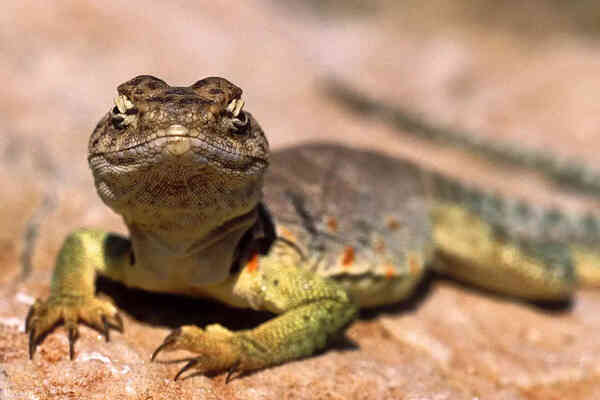The order Squamata is the most diverse of all groups of reptiles, with approximately 7400 extant species. Squamates include lizards, snakes, and worm-like lizards.
Squamous animals have two characteristics. The first is that they shed their skin regularly. Some scaly animals, such as snakes, shed their entire skin. Other scaly animals, such as many lizards, shed their skin in patches. In contrast, non-scaly reptiles regenerate their scales in other ways; for example, crocodiles shed one scale at a time, while turtles do not shed the scales that cover their carapace but instead add new scales from below.
The second common characteristic among squamates is their unique skull and jaw joints, which are both strong and flexible. The extraordinary jaw mobility of squamates allows them to open their mouths wide enough to eat large prey. Additionally, the strength of their skulls and jaws provides the squamates with a powerful bite.

Squamates first appear in the fossil record in the mid-Jurassic and may have existed before that. The fossil record of squamates is rather sparse. Modern squamates appeared during the late Jurassic period about 160 million years ago. The earliest lizard fossils date from 185 to 165 million years ago.
The closest relatives of living scaly animals are tuatara, followed by crocodiles and birds. Of all living reptiles, turtles are the most distant relatives of scaly animals. Like crocodiles, squamates are diatremes, a group of reptiles with two holes (or temporal openings) on each side of their skulls.
The main characteristics of squamous cells include:
The most diverse group of reptiles
Excellent cranial mobility
Squamata are classified into the following classification levels:
Animals>Chordates>Vertebrates>Tetrapods>Reptiles> Squamates
Squamates are divided into the following taxonomic groups:
Lizards (Lacertilia): With more than 4,500 species of lizards living today, they are the most diverse group of all squamates. Members of this group include iguanas, chameleons, geckos, night lizards, blind lizards, skinks, lizards, beaded lizards, and others.
Snakes (Serpentes): There are approximately 2,900 species of snakes in the world today. Members of this group include pythons, colubrids, pythons, vipers, blind snakes, mole vipers, and sun snakes. Snakes have no limbs, but their legless nature doesn't stop them from becoming some of the most fearsome reptilian predators in the world.
Worm lizards (Amphisbaenia): There are approximately 130 species of worm lizards alive today. Members of this group are burrowing reptiles that spend most of their lives underground. Worm lizards have strong skulls that are ideal for digging tunnels.
We created this article in conjunction with AI technology, then made sure it was fact-checked and edited by a Animals Top editor.